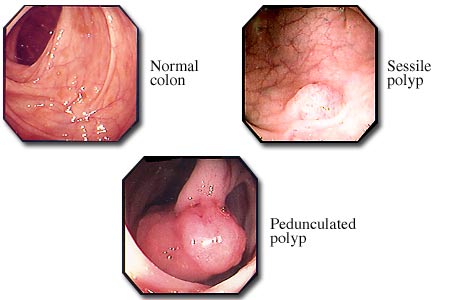 Wirral Surgeon
Excellence for Life
Wirral Surgeon
Excellence for Life
Condition treated
The most important point to remember is that everyone with a bowel problem can be helped and many can be completely cured.
It is never too late to get help with your bowel problems. If you would like some advice on how to approach your GP regarding your bowel problem do get in touch.

About Bowel polyps
Bowel polyps are growths that occur on the inner lining of the large bowel.
Not all bowel polyps are the same. There are different histologic types; the cells that make up the polyp have different characteristics when viewed under the microscope; different polyps vary in their tendency to become cancerous (malignant).
About Bowel polyps
Bowel polyps are growths that occur on the inner lining of the large bowel.
Not all bowel polyps are the same. There are different histologic types, that is, the cells that make up the polyp have different characteristics when viewed under the microscope; different polyps vary in their tendency to become cancerous (malignant).

Clinical presentation
Adenomatous polyps
The adenoma or adenomatous polyp is not only the most common type of polyp, but it is also the most common cause of colorectal cancer. The likelihood that an adenoma will develop into cancer is partially dependent on its size: the larger the polyp, the more likely it is that the polyp is or will become malignant (concern about the malignant potential increases with a polyp greater than one centimeter in size). Patients with multiple polyps are more likely to develop additional polyps in the future that may become malignant. Concern about this increasing malignant potential begins when there are three or more polyps. Finally, the malignant potential of an adenomatous polyp is related to the manner in which the cells of the polyp organize themselves: tubular structures (tubular adenomas) are less likely to become cancerous than cells that organize themselves into finger-like structures (villous adenomas).
Hyperplastic polyps
The second most common type of colon polyp is the hyperplastic polyp; they have little or no potential to become cancerous unless they are located in the right colon or show a particular histologic pattern under the microscope (a serrated appearance).
Other types of colon polyps:
Much less common types of colon polyps exist, and their potential for becoming cancerous varies greatly: hamartomatous, juvenile, and inflammatory polyps.
Judging by their aspect, polyps could be:
Genetic adenomatous polyp syndromes
Familial adenomatous polyposis (FAP) is a result of a mutation in the APC gene and is associated with the development of hundreds or bowel polyps at an early age. Eighty percent or more of these patients develop colon cancer if left untreated. For this reason, it is recommended that the entire colon be removed to prevent cancer.
Attenuated FAP is an uncommon form of FAP in which the number of polyps is less than 100.
The MYH polyposis syndrome is characterized by the development of less than 100 polyps at a young age and a high risk for developing colon cancer.
Symptoms
Only a small proportion of polyps cause symptoms or signs. When they do, the symptoms and signs usually are the result of bleeding from the polyp and may include:

Diagnosis
Bowel polyps can be diagnosed by:
The first two options also allow polyp removal.
Treatment
Bowel polyps are treated by endoscopic removal or occasionally by surgery.